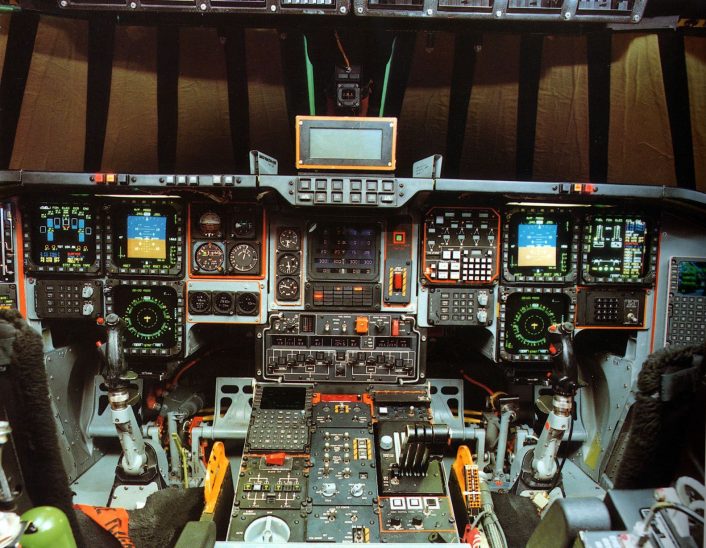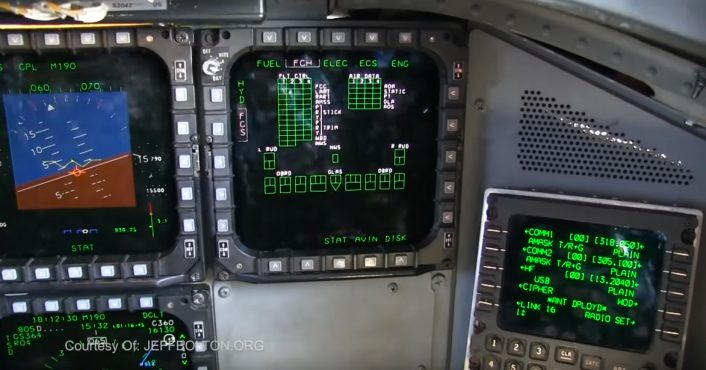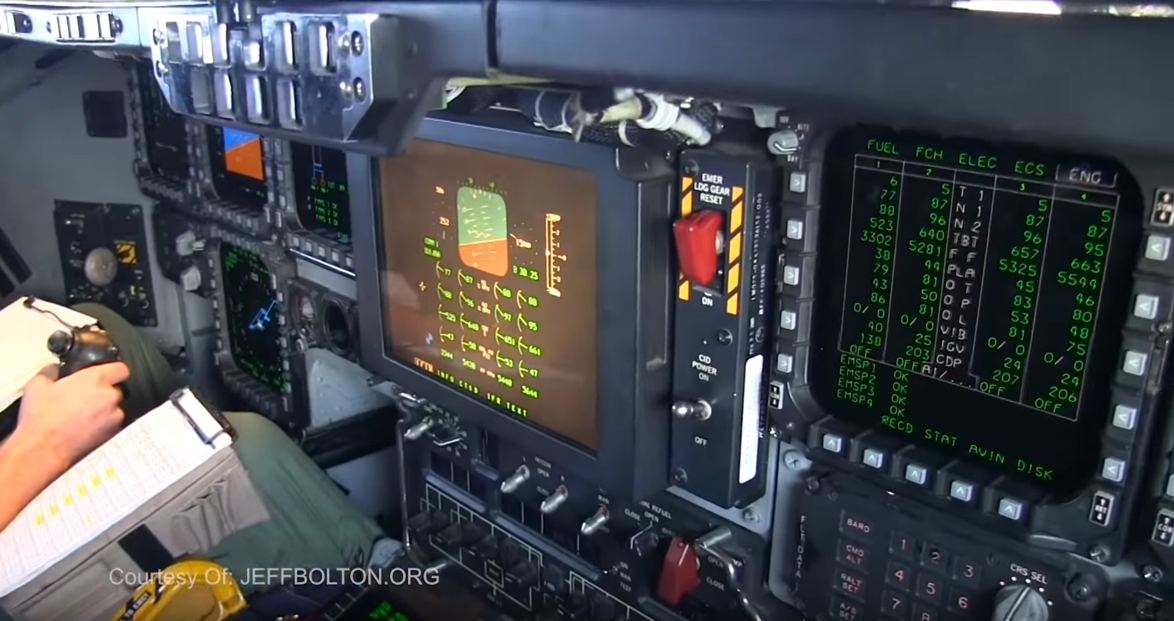Unique video footage recently filmed in a U.S. Air Force B-2A Spirit stealth bomber cockpit just released. And here are some interesting things that we have noticed.
For the first time in the 30-year history of the U.S. Air Force B-2 stealth bomber program, video footage showing the cockpit of a Spirit stealth bomber has been released.
FIlmed by Dallas-based film producer Jeff Bolton, along with air-to-air footage showing in-flight refueling, the video and the photograph available at JeffBolton.org provide a rare glimpse into the cockpit of the U.S. Air Force B-2A flying with the 509th Bomb Wing out of Whiteman Air Force Base, Missouri.
There are many interesting details, especially if we compare the current cockpit arrangement to the one shown by one of the few photos of a pretty old version available online.

As in earlier versions, throttles are not on the central console as it each seat has its own throttles, on the left hand side of the pilots (sticks are central). The HSD (Horizontal Situation Display)/Nav Panel has a triangle-shaped airplane icon in the center: a rather accurate representation of the aircraft that has replaced the original light, round-wingtip aircraft used in the earlier versions. The front panel (the part that is connected to the central console between the two seats) with the engine indicators has been replaced by large MFD (Multi-Function Display) that in the video is set on the EADI (Electronic Attitude Director Indicator) with the main engine paramenters.
Moving to the right (and looking at the co-pilot station) we can also notice an additional MFD: there are now 3x MFD in front of each pilot in the typical T-shape arrangement. MFD makes various “pages”, which can be selected and viewed at any time, available. Each page is a sort of mini-portal: from the homepage you can select various subpages that provide specific information or features. On the top row, the first on the left should be the EICAS (Engine Indicating and Crew Alerting System), the central one is the Primary Flight Display, the right one shows the FCS (Flight Control System) status. The bottom one is set on the HSD that is to the Situational Awareness as it shows the situation arount the aircraft, including friendly (and if present enemy aircraft), threats, waypoints etc.
Moving to the right, we can also take a quick look at the radio panel.

There are two UHF frequencies tuned in the radios (COMM1 and COMM2). Interestingly, the aircraft has also selected an HF frequency: high-frequency comms are still required for communication and position reporting over water and long distances beyond the range of U/VHF radios. The panel also shows the Have Quick Radio: the WOD (Word Of the Day) that is shown in the video is the key used along with the TOD (Time Of the Day) and the NET (multiple networks of frequencies are available) to initiate the cryptographic pseudo-random number generator that controls the frequency hopping scheme.
The panel also shows the message “ANT DPLOYD” that means “Antenna Deployed” above the Link 16 radio controls.
The aircraft should embed the Common Very Low Frequency Receiver Increment 1, or CVR-1, a modification to receive orders from the President of the U.S. via EAMs (Emergency Action Messages). With CVR-1, the B-2s bypass the previous system that used UHF system and Military Strategic Tactical and Relay (MILSTAR) satellite relay: its radios should be capable to receive VLF (Very Low Frequency) signals bounced off of lower levels of the atmosphere.
Ok, this is all I could gather from the really interesting and short video (BTW, there is also a “cameo” of a B61 nuclear bomb at the beginning, isn’t it?). The current B-2 cockpit is the result of multiple avionics upgrades through the years and has changed a lot since the aircraft was introduced in service.
Take a look at Jeff Bolton website for additional photographs of the cockpit. Another version of the video should also appear on DefenseNews website.













